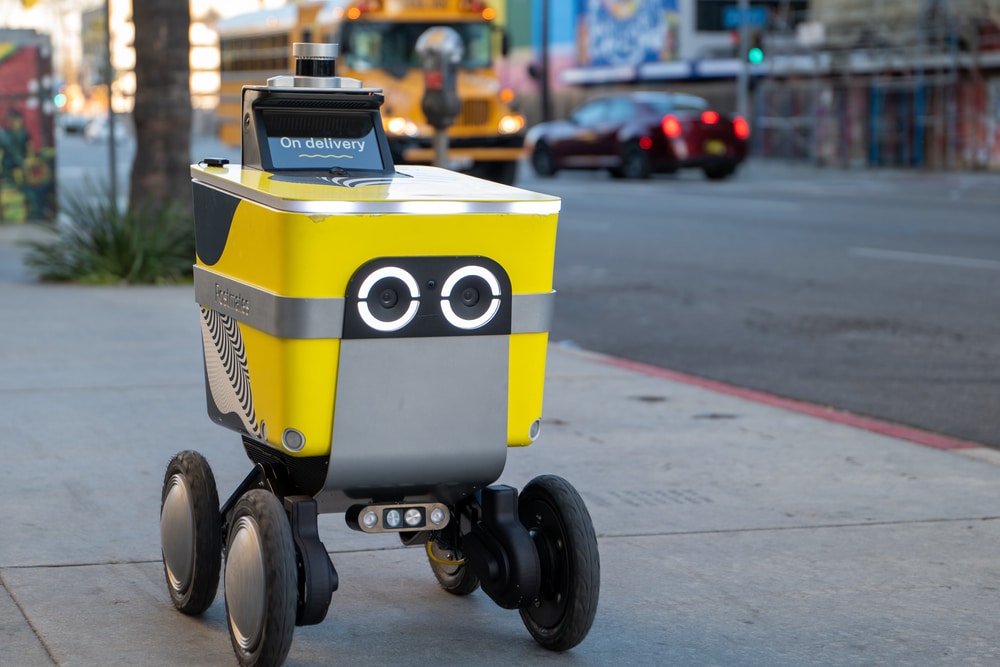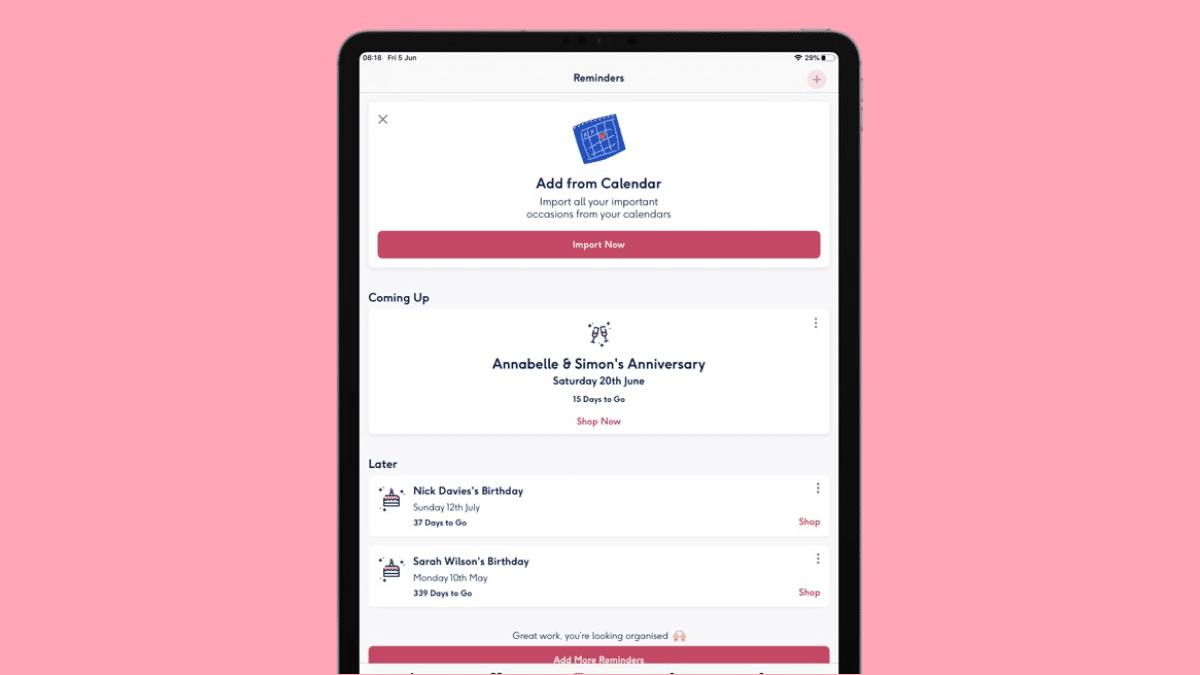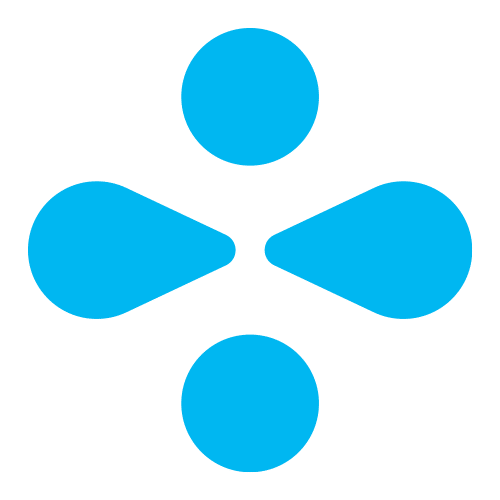Insight / Blog
The evolution of automation in the last mile and its weird and wonderful future

Summary: When you look back at the past, weird & wonderful predictions of automation in the last mile become less absurd and more believable.
There’s not an area of life that automation hasn’t touched. It’s an exciting topic that continues to grow, but in ways that are hard to predict. Most predictions come across as wishful thinking, or dismissed as unrealistic expectations of what can be achieved within the next few years.
However, when you look at what has been achieved up until now, some of the visions of the future that once seemed absurd now feel more realistic. Think about the start of this century, when mobiles were becoming widespread, and the internet started booming. If you had said then that in just two decades cash would be rarely used, that you would pay via your watch, and that there would be little household robots to tell you the weather and add items to your shopping list… Well, that all would have seemed far-fetched too.
None of it happened overnight. It was a gradual process of change and learning new behaviours. As those changes stack up, weird and wonderful predictions might come to seem less absurd and more obviously likely. So, let’s look into the crystal ball and see what automation in ecommerce and the last mile has in store for us.
20 years ago…
It’s the early 2000s.
You look at the calendar on the wall and notice your sister’s birthday is next week, and you need to buy her a present. You head down to the shop, stopping at an ATM to withdraw some cash to use on the present. This is your budget.
After spending 20 minutes walking around and looking at items on the shelves, you find something she’ll like. Then it’s time to join the queue at the counter, feeling lucky that there are only 2 people ahead of you. While there, you decide to also top up your new Nokia 3310 phone credit by £10, so you have the 10p spare to text her a birthday message.
…vs now
You get an automated reminder on your phone that your sister’s birthday is coming up. Depending on which retailer you shopped with in the past, you might even get reminders from the likes of Moonpig asking if you want to place another card order like you did last year.
You need to get your sister a present, but this is the age of convenience. You have multiple options, including browsing online and checking out from a retailer within minutes. The present arrives the next day, with fully automated tracking and communication letting you know every detail about your parcel’s journey and when to expect it.
Or, you could head to a physical store and select the item off the shelf. This time though, you go to a self-checkout so you don’t have to interact with anyone or pause the riveting podcast playing through your AirPods. You just need to get your phone out to pay via contactless, which you can then use to grab an Uber or locate a nearby Lime bike for the route home.

In the not-so-distant future…
Your personal robotic assistant (Amazon’s Alexa, Google Home or other) reminds you that your sister’s birthday is coming up. It has access to your sister’s profile, and based on her interests and Wishlist, it suggests a present she might like.
You think it’s a great idea and confirm the order with a voice command. Knowing your address, work, and schedule, it completes the order for you, ordering to a PUDO next to your office as it knows you’ll be commuting tomorrow. The whole process takes less than a minute.
When ordered, the retailer’s system informs the manufacturer to get the item made to order. Items are shipped via underground tunnels or autonomous vehicles to distribution centres, and then again to local collection points, such as PUDO stores or lockers.
For home deliveries, the last mile could be completed by an autonomous moving parcel locker, which alerts you when it’s outside your house to collect your parcel from the designated locker. Or, a delivery robot (think Starship) makes the final journey alone, leaving the package in a designated spot inside your home.
This prediction may seem a little jarring to some, but it’s not as far away as you might think, with most of these pieces already in development, as I’ll explain below.
Automated profiles are already in progress
Profiles on your interests and tastes already exist. Spotify algorithms curate playlists based on the music you listen to, Netflix suggests films you might like, and Amazon makes product recommendations based on past purchases. It’s not a perfect system yet – Amazon might mistake the emergency toilet seat replacement as you undertaking a bathroom remodel, but it’s just getting smarter with more time and data.
Having this information boiled down into a single, unified source of information about you doesn’t feel that far away. It’s about convenience. With a single profile, you could go onto any retailer and automatically filter products on your size and past purchases from similar retailers. And if it interacted with your friends and family profiles, you could just as easily shop for others.
Companies like Google, Facebook and Amazon have developed and monetized massive data collection systems like this by aggregating consumer data and making it available to advertisers in the form of ad targeting. However, this means that the consumer data is locked into these proprietary walled gardens, and advertisers must pay to play the role of the intelligent suggestions of products and services. Opening up that data, or allowing machine learning models to access it to make better recommendations, will be essential for a truly intelligent consumer dataset.
For that profile to work across multiple platforms and retailers, it needs to be developed by a business with scale, ecommerce knowledge and infrastructure. Away from the digital advertising giants, that could mean an entrant from the world of payments – providers like Klarna are already building consumer-facing shopping applications, for example. Alternatively, it could come from the new social media kid on the block, TikTok, which is already investing seriously in shopping and has one of the most potent recommendation algorithms ever seen.
As technology develops, retailers could detect if someone from your circle has purchased an item as a present, removing the option for others so you don’t double up on the same item – all without alerting you or ruining the surprise. If your profile worked across recommerce platforms like eBay, Vinted or Facebook Marketplace, there would also be the potential to highlight people you know selling items of interest.
The more data that consumer profiles can pull together and learn from, the smarter their suggestions will be.

From industry silos to a dynamic chain
Ecommerce is fractured into silos, with product, retail and distribution all claiming their position in the chain. Over the next few years, automation could see the lines break down between these silos, where ecommerce items are ordered, then manufactured and shipped in one smooth, dynamic process. Clearly, that wouldn’t fit into most existing supply chains, where goods are mass-produced in places like China and India, then shipped in bulk to retail warehouses around the world, waiting for a consumer to purchase them. But if there’s a serious impulse towards sustainability, having a much shorter journey from manufacture to delivery and far less wasted production makes a lot of sense. Moving production to smaller-scale, localised operations nearer to Western consumers would result in increased costs, but that could easily become part of consumer behaviour, valuing locally or nationally-produced, no-waste products above mass production.
We’re already seeing the beginnings of this breakdown of silos happening. Amazon is both a retailer and a distributor. Carriers are forming more advantageous partnerships with retailers through returns solutions. Retailers use automation to manage stock orders and predict demand, influencing their relationship with manufacturers.
Companies like Shein already release and test products at a frightening speed, with 6,000 new items added to its website every day. Its process is to order small batches of items from one of up to 3,000 subcontracted manufacturers, which are made at breakneck speeds and immediately posted on the website. If they’re popular, more are ordered. Sample, test, then order.
Now, Shein is far from ideal, with multiple concerns and criticisms about worker conditions. But its model shows that retailers don’t have to gamble on which stock they think will be popular. Shein already knows, and its shoppers have already purchased.
As manufacturing gets smarter and faster (especially with advancements in 3D printing), it’s not a huge leap for local manufacturers to fulfil orders after a retailer sells an item, particularly if consumers become more sustainability-focused and want to order from local production rather than overseas shipping.
Rather than make, order, deliver – it will become order, make, deliver.
Autonomous vehicles will start to take over
Self-driving cars aren’t quite here yet – but autonomous technology along pre-set routes, like between warehouses or distribution centres, will emerge in the next few years. Whether it happens above the ground with automated trucks, or below the ground on tunnels being developed by the likes of Magway, this will become a priority as parcel volumes continue to rise.
The more parcel volume carriers face, the more they must rely on automated systems like this to increase efficiency. Moreover, an increase in parcel volume will also increase the number of vehicles and congestion on the road, as well as CO2 emissions. If more regulation is passed to decrease emissions and congestion, funding for alternative solutions like automated underground cargo tunnels will skyrocket.
Regulation is coming for European ecommerce logistics
Common routes will be the first to be automated. But the technology evolves, and we grow more comfortable with it, we might start to see autonomous vehicles in the last mile for home delivery. This might be achieved through moving parcel lockers that alert consumers when they are in the area, or small armies of individual robots or drones that can leave parcels safe at designated parcel zones. These zones could be containers outside homes or even a marked spot inside your home that the delivery robots can access through special doors only they have the key to unlock. Think of it like a cat flap, but just for your parcels.
The last mile will become more automated
The predictions here might or might not come true. Predicting the future is a tricky subject. But one thing to be certain of here is that the last mile will become more automated in the constant quest to become more efficient – particularly with rising volume and customer expectations.

Related articles
Convenient and sustainable: developing an out-of-home delivery strategy
Sustainability has become a key decision factor for retailers - here's how carriers can stay ahead with an out-of-home delivery strategy that’s both sustainable and convenient for consumers
5 Changes We Predict in eCommerce Delivery & Returns in 2024
Our predictions for 2024 in ecommerce delivery and returns, plus a roundup of our 2023 predictions.
What are the different types of self-service parcel kiosks?
We explore the different types of self-service kiosk, outlining the pros, cons and best use cases for each.














